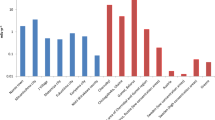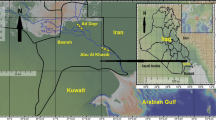Abstract
Epilation was reported among atomic bomb survivors in Hiroshima and Nagasaki, including “early entrance survivors” who entered the cities after the bombings. The absorbed dose to the skin by neutron-activated soil via β and γ rays has been estimated in a preliminary fashion, for these survivors in Hiroshima. Estimation was done for external exposures from activated soil on the ground as well as skin and hair contamination from activated soil particles, using the Monte Carlo radiation transport code MCNP-4C. Assuming 26 μm thickness of activated soil on the skin as an example, the skin dose was estimated to be about 0.8 Gy, for an exposure scenario that includes the first 7 days after the bombing at 1 m above the ground at the hypocenter. In this case, 99% of the total skin dose came from activated radionuclides in the soil, i.e., 0.19 and 0.63 Gy due to β and γ rays, respectively. In contrast, contribution to skin dose due to skin contamination with soil particles was found to be about 1%. To make it comparable to the exposure by neutron-activated soil on the ground, a soil thickness on the skin of about 1 mm would be required, which seems to be difficult to keep for a long time. Fifty-five percent of the 7-day skin dose was delivered during the first hour after the bombing. Our estimates of the skin dose are lower than the conventionally reported threshold of 2 Gy for epilation. It should be noted, however, that the possibility of more extreme exposure scenarios for example for entrants who received much heavier soil contamination on their skin cannot be excluded.





Similar content being viewed by others
References
Otake M, Neriishi K, Schull WJ (1996) Cataract in atomic bomb survivors based on a threshold model and the occurrence of severe epilation. Radiat Res 146:339–348
Neriishi K, Wong FL, Nakashima E, Otake M, Kodama K, Choshi K (1995) Relationship between cataracts and epilation in atomic bomb survivors. Radiat Res 144:107–113
Hiromi Iida (1992) Introduction of radiation. Tsushosangyokenkyu-sha, Tokyo (in Japanese)
Nihon Housou Kyoukai (1988) Trace of atomic bomb rescue. Nihon Housou Kyoukai, Tokyo (in Japanese)
Hoshi M, Hasai H, Yokoro K (1991) Studies of radioactivity produced by the Hiroshima atomic bomb: 2. Measurements of fallout radioactivity. J Radiat Res 32(Suppl):32–39
Okajima S, Fujita S, Harley JH (1986) Radiation doses from residual radioactivity. In: William CR (ed) Reassessment of atomic bomb radiation dosimetry—dosimetry system 1986, vol 1. Radiation Effects Research Foundation, Hiroshima, pp 209–230
Santoro RT, Egbert SD, Barnes JM, Kerr GD, Pace JV III, Roberts JA, Slater CO (2005) Radiation transport calculation for Hiroshima and Nagasaki. In: Young RW, Kerr GD (eds) Reassessment of the atomic bomb radiation dosimetry for Hiroshima and Nagasaki—dosimetry system 2002, vol 2. Radiation Effects Research Foundation, Hiroshima, pp 139–201
Imanaka T, Endo S, Tanaka K, Shizuma K (2008) Gamma-ray exposure from neutron-induced radionuclides in soil in Hiroshima and Nagasaki based on DS02 calculations. Radiat Environ Biophys. doi:10.1007/s00411-008-0164-1, http://www.springerlink.com/content/100453/?Content+Status=Accepted
Barss NM, Weitz RL (2006) Reconstruction of external dose from beta radiation sources of nuclear weapon origin. Health Phys 91:379–389
Egbert SD, Kerr GD, Cullings HM (2007) DS02 fluence spectra for neutrons and gamma rays at Hiroshima and Nagasaki with fluence-to-kerma coefficients and transmission factors for sample measurements. Radiat Environ Biophys 46:311–325
Kosako K, Yamano N, Fukahori T, Shibata K, Hasegawa A (2003) The libraries FSXLIB and MATXSLIB based on JENDL-3 JAERI-Data/Code 2003–011. http://wwwndc.tokai-sc.jaea.go.jp/ftpnd/evlret.html. Cited on 19 Dec 2006
MacFarlane RD, Muir DW (1994) The NJOY nuclear data processing system version 91 LA-12740-M
Tanaka K, Endo S, Toyoda S, Tieliewuhan E, Romanyukha A, Hoshi M (2007) Monte-Carlo-based calculation of imaging plate response to 90Sr in teeth—experimental validation of the required correction on sample thickness. Radiat Environ Biophys 46:215–220
Fermi E (1934) An attempt of a theory of beta radiation. Phys Z 88:161–177. Translated in Kabir PK (ed) The development of weak interaction theory. Gordon and Breach, New York, p 88
Transport Methods Group in Los Alamos National Laboratory (1997) TSICC computer code collection MCNP4B Monte Carlo N-Particle Transport Code system CCC-660
ICRP (1991) Publication 60. The 1990 recommendations of the International Commission on Radiological Protection. Annals of ICRP 21. Pergamon Press, Oxford
Japanese Society of Medical Physics (2002) Standard method for measurement of absorbed dose in external radiation therapy. Tsushosangyokenkyu-sha, Tokyo (in Japanese)
Sotaro Kurata (2008) Epilation. Website of Japanese society of clinical hair restoration. http://www.jschr.org/datumou01.htm. Accessed on 080423 (in Japanese)
Fogh CL, Byrne MA, Andersson KG, Bell KF, Roed J, Goddard AJH, Vollmair DV, Hotchkiss SAM (1999) Quantitative measurement of aerosol deposition on skin, hair and clothing for dosimetric assessment. R-1075 (EN), Risø National Laboratory, Roskilde, Denmark
Andersson KG, Fogh CL, Byrne MA, Roed J, Goddard AJH, Hotchkiss SAM (2002) Radiation dose implications of airborne contaminant deposition to humans. Health Phys 82:226–232
Hession H, Byrne MA, Cleary S, Andersson KG, Roed J (2006) Measurement of contaminant removal from skin using a portable fluorescence scanning system. J Environ Radioact 85:196–204
Hashizume T, Maruyama T, Kumamoto Y, Kato Y, Kawamura S (1970) Estimation of gamma-ray dose from neutron-induced radioactivity in Hiroshima and Nagasaki. Hiroshima atomic bomb cacualty commission, technical report, pp 16–70
Cross WG, Freedman NO, Wong PY (1992) Beta ray dose distributions from skin contamination. Rad Prot Dosim 40:149–168
International Commission on Radiation Units and Measurements (1997) ICRU Report 56. Dosimetry of External Beta Rays for Radiation Protectio, Maryland
ICRP (1990) Publication 59. The biological basis for dose limitation in the skin. Pergamon Press, Oxford
Tinkle SS, Antonini JM, Rich BA, Roberts JR, Salmen R, De Pree K, Adkins EJ (2003) Skin as a route of exposure and sensitization in chronic beryllium disease. Environ Health Perspect 111:1202–1208
Japan Isotope Association (2005) Isotope handbook. Maruzen, Tokyo
Acknowledgments
Part of the present study was supported by Grant-in-Aid for Scientific Research from the Japan Society for the Promotion of Science under grant #15406002 and #17406001, awarded to Prof M. Hoshi, Hiroshima University. The authors express their sincere appreciation to Dr. Neil Whitehead, Mr. Kazuhide Kitagawa, Mr. Shinji Suga, and Mr. Shingo Sasatani, Hiroshima University, for their eager discussions.
Author information
Authors and Affiliations
Corresponding author
Rights and permissions
About this article
Cite this article
Tanaka, K., Endo, S., Imanaka, T. et al. Skin dose from neutron-activated soil for early entrants following the A-bomb detonation in Hiroshima: contribution from β and γ rays. Radiat Environ Biophys 47, 323–330 (2008). https://doi.org/10.1007/s00411-008-0172-1
Received:
Accepted:
Published:
Issue Date:
DOI: https://doi.org/10.1007/s00411-008-0172-1




